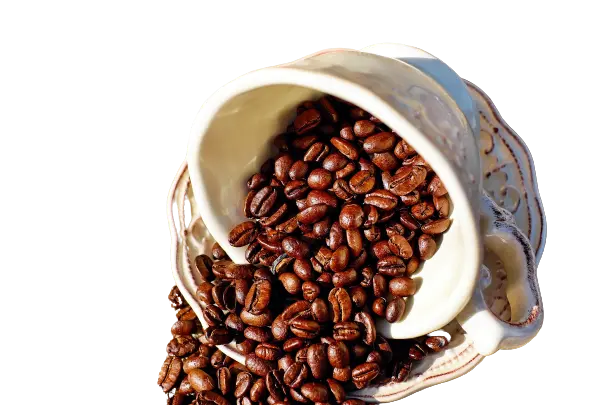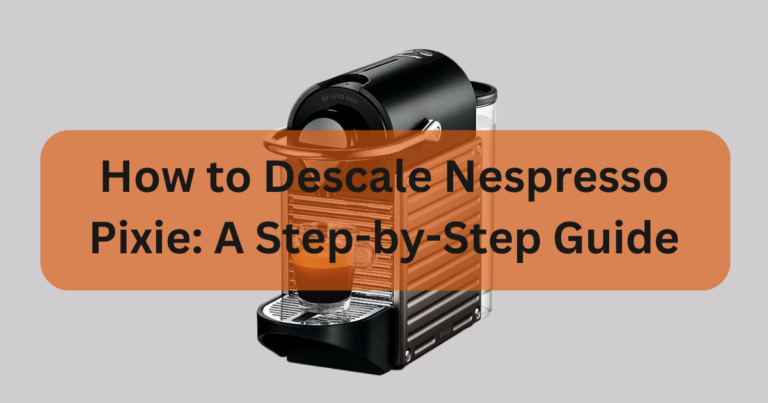Can You Grind Coffee Beans in a Food Processor? Pros, Cons, and Tips

Coffee lovers who enjoy the aroma and flavor of freshly ground coffee often wonder if they can use a food processor as an alternative to a coffee grinder. Grinding coffee beans is an essential step in the coffee-making process, as it helps release the flavors and aromas locked within the beans. In this article, we will explore whether grinding coffee beans in a food processor is a viable option, as well as alternative methods for grinding coffee beans without a grinder. So grab your mug and let’s dive into the article!
Contents
- 1 Understanding Coffee Grinding
- 2 Can You Use a Food Processor to Grind Coffee Beans?
- 3 The Food Processor’s Blade
- 4 Steps to Grind Coffee Beans in a Food Processor
- 5 Alternative Ways to Grind Coffee Beans
- 6 Tips for Grinding Coffee Beans at Home
- 7 Brewing Your Ground Coffee
- 8 The Pros and Cons of Using Food Processor
- 9 Conclusion
- 10 FAQs
- 11 Q: Is a food processor as effective as a dedicated coffee grinder?
- 12 Q: What is the difference between a food processor and a coffee grinder?
- 13 Q: Can I use a blender instead of a food processor to grind coffee beans?
- 14 Q: Can I get a coarse grind with a food processor?
- 15 Q: How can I grind my coffee beans without a dedicated grinder?
- 16 Q: How much coffee should I grind at a time?
- 17 Q: Can I use a food processor to grind whole coffee beans?
Understanding Coffee Grinding
What is Grinding?
Grinding refers to the process of crushing or pulverizing coffee beans into smaller particles. The size of the grind plays a crucial role in the extraction process, as different brewing methods require different grind sizes. A coarser grind is suitable for methods such as French press, while a finer grind is necessary for espresso.
Importance of Grinding Coffee Beans
Grinding coffee beans is pivotal for fresher, richer coffee. It unlocks the beans’ flavors, releasing their aromatic compounds, resulting in a more satisfying cup. Moreover, grinding just before brewing ensures maximum freshness, as pre-ground coffee loses its flavor more quickly.
Can You Use a Food Processor to Grind Coffee Beans?
Certainly, you can use a food processor to grind coffee beans. It’s a versatile kitchen appliance designed for various culinary tasks, such as chopping, slicing, and blending. But can it handle the task of grinding coffee beans? The suspense is over and the answer is yes!. However, keep in mind that while it can get the job done, it may not provide the same precision and consistency as a dedicated coffee grinder. In spite of that you can still make a great cup of coffee by using food processor if you dont have a grinder.
The Food Processor’s Blade
The key to using a food processor for coffee grinding lies in the appliance’s blade. Food processors typically come equipped with sharp, stainless steel blades that are capable of pulverizing a variety of ingredients. These blades can indeed grind coffee beans, but there are some important considerations to keep in mind.
Steps to Grind Coffee Beans in a Food Processor
If you’re determined to use your food processor for grinding coffee beans, follow these steps for the best results:
- Measure the Beans: Start by measuring the desired amount of coffee beans. Keep in mind that it’s best to grind only the amount you intend to use immediately to preserve freshness.
- Freeze the Beans: For the best results, freeze the coffee beans for about 15 minutes before grinding. This helps maintain the beans’ integrity and prevents them from heating up during the grinding process, which can negatively impact the flavor.
- Pulse, Don’t Grind Continuously: Place the frozen beans in the food processor and pulse the machine. Avoid continuous grinding, as this can lead to overheating. Instead, pulse in short bursts until you achieve the desired grind consistency.
- Check Consistency: Periodically check the grind consistency by stopping the food processor and examining the grounds. Continue pulsing if necessary to achieve the desired size.
- Transfer and Brew: Once you’ve achieved the right grind size, transfer the coffee grounds to your preferred brewing method, whether it’s a French press, drip coffee maker, or espresso machine.
Alternative Ways to Grind Coffee Beans
Using a Blender
If you have a blender at home, you can use it as an alternative method for grinding coffee beans. Start by adding a small amount of coffee beans to the blender, making sure not to overcrowd it. Pulse the blender in short bursts until you achieve the desired grind consistency. It’s important to note that blenders may not produce as consistent of a grind as coffee grinders, so you may need to experiment with the pulsing time to achieve the right grind size.
Using a Spice Grinder
A spice grinder can also be used as an alternative to a coffee grinder. Similar to a coffee grinder, a spice grinder is designed to grind small, dry ingredients into a fine powder. Measure the desired amount of coffee beans into the spice grinder and secure the lid. Until you get the required grind size, pulse the grinder briefly. Remember to clean the spice grinder thoroughly before and after use to avoid any residual flavors.
Other Creative Methods
If you don’t have access to a blender or a spice grinder, there are other creative methods you can try to grind your coffee beans. One option is using a mortar and pestle to manually crush the beans. This method requires more effort and time compared to using a grinder, but it can be a suitable solution in a pinch. Another option is placing the coffee beans in a strong plastic bag and using a rolling pin to crush them. This method can be useful if you prefer a coarse grind.
Tips for Grinding Coffee Beans at Home

Choosing the Right Grind Size
When grinding your coffee beans, it’s essential to choose the right grind size based on the brewing method you plan to use. A coarse grind is suitable for methods like French press and cold brew, while a medium grind works well for drip coffee makers. For espresso, a fine grind is necessary. Keep in mind that different coffee grinders may have different settings for grind size, so it’s important to adjust accordingly.
Ensuring Consistency in Grind
Consistency in grind size is crucial for achieving a balanced and flavorful cup of coffee. To ensure an even grind, it’s recommended to grind the coffee beans in short bursts, rather than continuously grinding. This helps prevent overheating the coffee, which can affect the flavors. Additionally, it’s important to clean the grinder regularly to avoid any residue buildup that can alter the taste of the coffee.
Best Practices for Grinding Coffee Beans
Follow these best practices when grinding your coffee beans at home:
- Measure the desired amount of whole coffee beans.
- Place the coffee beans in the grinder or alternative method.
- Grind the beans according to the recommended settings or pulsing time.
- Check the grind size and adjust if needed.
- Transfer the ground coffee to an airtight container to preserve freshness.
Brewing Your Ground Coffee
Choosing the Right Brewing Method
Once you have ground your coffee beans, it’s time to brew a delicious cup of coffee. The brewing method you choose will depend on your personal preference and the grind size you have achieved. Drip coffee makers are a popular choice for everyday brewing, while pour-over methods offer more control over the extraction process. Other methods such as French press, espresso, and cold brew each require specific techniques and equipment.
Storing and Using Ground Coffee
Proper storage is essential to maintain the quality of your ground coffee. Store the ground coffee in an airtight container in a cool, dark place. Avoid storing it in the refrigerator, as the moisture can affect the flavors. It’s recommended to use the ground coffee within two weeks for optimal freshness. Remember to measure the appropriate amount of coffee based on your desired strength and adjust the brewing parameters accordingly.
Experimenting with Different Coffee Grinds
As you become more experienced with grinding coffee beans, don’t be afraid to experiment with different grind sizes and brewing methods. Each combination can result in unique flavors and aromas, allowing you to discover your perfect cup of coffee. Keep a record of your brewing parameters and tasting notes to refine your brewing process over time.
The Pros and Cons of Using Food Processor
Using a food processor to grind coffee beans comes with both advantages and disadvantages. Let’s explore these to help you make an informed decision.
Pros:
- Versatility: A food processor is a multi-purpose appliance that can handle various kitchen tasks, including coffee grinding.
- Cost-Effective: If you already own a food processor, you can save money by using it for coffee grinding instead of purchasing a separate coffee grinder.
- Easy to Clean: Food processors are relatively easy to clean, making the process convenient.
Cons:
- Heat Generation: Overheating during grinding can negatively impact the flavor of your coffee.
- Inconsistent Grind Size: Achieving a consistent grind size can be challenging with a food processor compared to a dedicated coffee grinder.
- Coffee Residue: Coffee oils and residue may build up in the food processor, affecting its performance over time.
Conclusion
In conclusion, yes, you can grind coffee beans in a food processor, but it’s not necessarily the ideal method for coffee enthusiasts who seek the perfect cup. If you’re looking for the best possible coffee experience, it’s recommended to invest in a dedicated coffee grinder or explore alternative methods such as using a blender or spice grinder. However, in a pinch or for occasional use, your trusty food processor can certainly come to the rescue. When grinding coffee beans at home, always consider the grind size and consistency, and adjust accordingly based on your preferred brewing method. Remember to store your ground coffee properly and experiment with different grind sizes and brewing techniques to find your perfect cup of coffee.
FAQs
Q: Is a food processor as effective as a dedicated coffee grinder?
A: No, a food processor is not as effective as a dedicated coffee grinder when it comes to grinding coffee beans.
Q: What is the difference between a food processor and a coffee grinder?
A: A food processor is designed for a variety of kitchen tasks, while a coffee grinder is specifically designed to grind coffee beans.
Q: Can I use a blender instead of a food processor to grind coffee beans?
A: Yes, you can use a blender to grind coffee beans if you don’t have a food processor or coffee grinder.
Q: Can I get a coarse grind with a food processor?
A: It can be challenging to get a consistently coarse grind with a food processor. The grind may be more uneven compared to a coffee grinder.
Q: How can I grind my coffee beans without a dedicated grinder?
A: If you don’t have a coffee grinder, you can try using a blender, a mortar and pestle, or other alternative methods mentioned earlier.
Q: How much coffee should I grind at a time?
A: The amount of coffee you should grind depends on how many cups of coffee you want to brew. As a general guideline, you can use 1 to 2 tablespoons of coffee per 6 ounces of water. Adjust the amount according to your preferred strength.
Q: Can I use a food processor to grind whole coffee beans?
A: Yes, you can use a food processor to grind whole coffee beans into smaller particles.
Recommended Reads
Discover the Best Coffee Grinder Under $100: 5 Top Picks
Discover the 5 Best Quite Coffee Grinders of 2023:Our Top Picks
Timemore C2 vs C3: A Comprehensive Comparison of Two Elite Coffee Grinders
The 6 Best Single Dose Espresso Grinders of 2023






